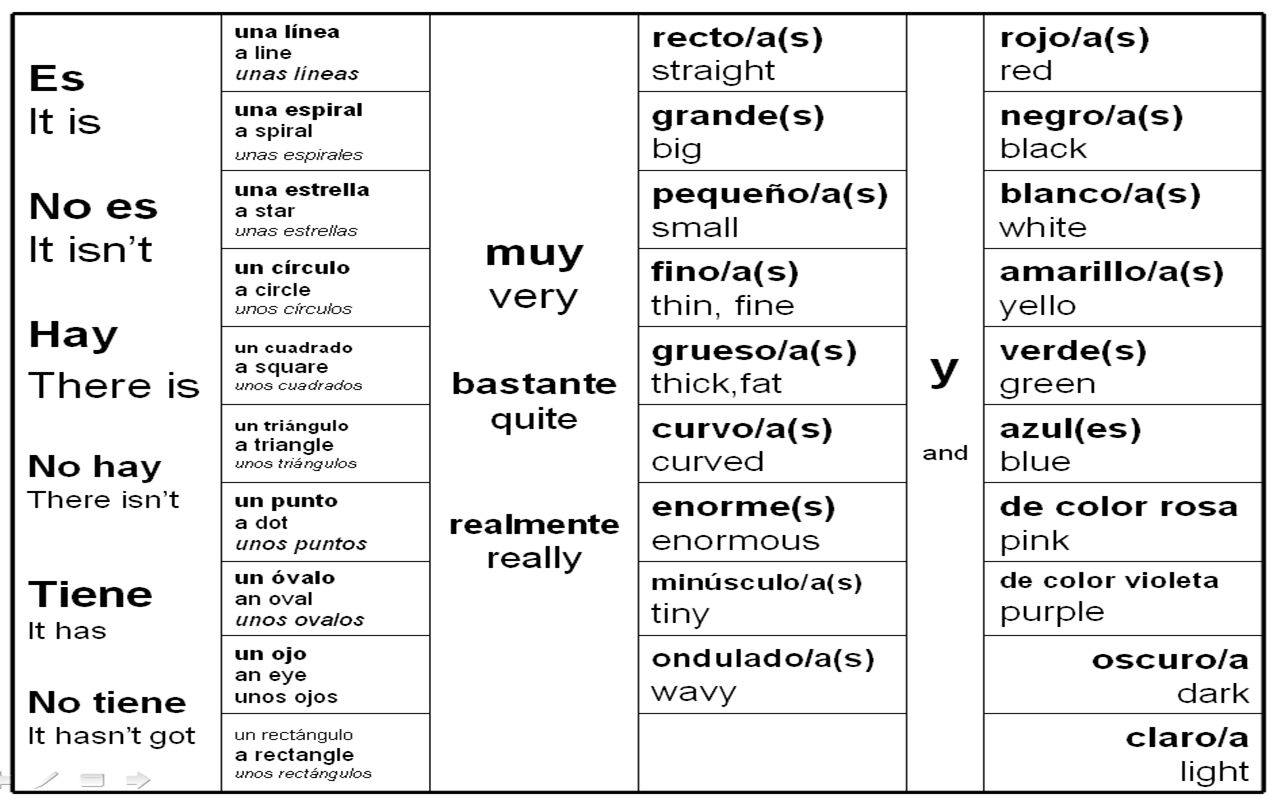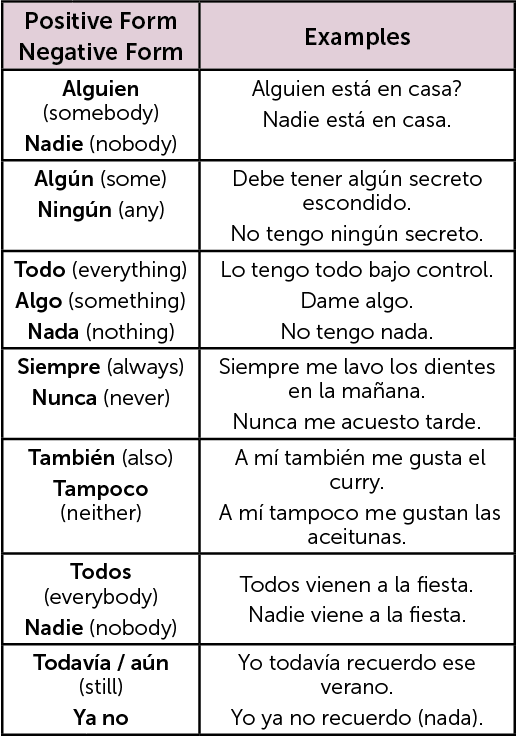How To Form A Sentence In Spanish
How To Form A Sentence In Spanish - Comprehensive review 1 12 questions 6. But, in spanish, the article must match the noun. Web 1) declarative sentences the main purpose of declarative sentences is to provide information about a particular event or situation. Extra practice 1 14 questions 10. Web here’s everything you need to know about constructing sentences in spanish, so you can speak and write freely without getting tripped up on word order. A verb, a subject, and a noun. Every spanish sentence needs a subject and a verb (at the minimum). Click here to learn spanish sentences online. Greetings use these basic sentences in spanish as both formal and informal greetings. Now, sometimes there are mixed groups with both males and females.
Affirmative, negative, or interrogative, with the most common being the affirmative form, which follows a subject + verb + complement structure. Every verb is conjugated depending on the subject pronoun. Practice building sentences with a quiz. A verb, a subject, and a noun. Using the right gender for nouns is key in spanish, as it can change entire sentences. Complete sentences need three things: El restaurante + es + elegante. Web here’s everything you need to know about constructing sentences in spanish, so you can speak and write freely without getting tripped up on word order. Sujeto y predicado, or subject and predicate. Web learning the correct spanish sentence structure expands your communication abilities.
Don’t worry, they’re really simple. Spanish noun and adjective order is reversed from english after a basic sentence, it’s important to. The dog eats dog food. Web step by step description of how you form sentences in spanish. Web 1) declarative sentences the main purpose of declarative sentences is to provide information about a particular event or situation. To make a normal, affirmative sentence, you need. El perro is the sujeto, and come concentrado is the predicado. For instance, the sentence “él come manzanas” translates to “he eats apples,” where “él” is the subject, “come” is the verb, and. On this occasion, we will analyze the syntactic structure of simple sentences in spanish, that is, the subject and the predicate in spanish. Sujeto y predicado, or subject and predicate.
PLEASE HELP ASAP!!! CORRECT WRITTEN SPANISH SENTENCES ONLY PLEASE
This is one of the main differences when comparing spanish vs. You can use them as introductions, when you arrive at a new place, or meet new people. Web here’s everything you need to know about constructing sentences in spanish, so you can speak and write freely without getting tripped up on word order. Web in spanish, sentences can take.
Pin on Writing in Spanish & French class
So, we make a small change: Comprehensive review 4 29 questions 9. Greetings use these basic sentences in spanish as both formal and informal greetings. Web 1) declarative sentences the main purpose of declarative sentences is to provide information about a particular event or situation. Web 10 essential rules for crafting simple spanish sentences 1.
15 Best Images of Spanish Sentences Worksheets Spanish Words and
Web basic sentences in spanish: Don’t worry, they’re really simple. Regular verbs 23 questions 2. Every spanish sentence needs a subject and a verb (at the minimum). Subject + verb + adjective/adverb/etc.
Spanish Sentence Structure Hispanissimo Spanish Academy
The dog eats dog food. Spanish noun and adjective order is reversed from english after a basic sentence, it’s important to. In english, we use “the” whether there are one or many things. But, in spanish, the article must match the noun. Practice building sentences with a quiz.
Basic Spanish Sentence Patterns You Can Use Right Away
Web in spanish, as in english, you form a basic sentence by combining a subject, a verb, and perhaps further descriptive information. Word order in different types of sentences; Subject + verb + adjective/adverb/etc. Every spanish sentence needs a subject and a verb (at the minimum). La escritura es un proceso en el que las letras se convierten en palabras,.
Ten Spanish Imperatives to Use with Kids Who Are Learning the Language
(to come up with a phrase) a. Web 1) declarative sentences the main purpose of declarative sentences is to provide information about a particular event or situation. Web in spanish, sentences can take on three main forms: Every spanish sentence needs a subject and a verb (at the minimum). Web 10 essential rules for crafting simple spanish sentences 1.
Basic Spanish sentence structures
El perro is the sujeto, and come concentrado is the predicado. All you need to do is to change the intonation to make it a question. Web spanish sentences with verbs and nouns are divided into two parts: Now, sometimes there are mixed groups with both males and females. In english, we use “the” whether there are one or many.
Spanish Sentence Strips and MiniBooks Spanish Playground
Writing is a process, whereby letters are assembled into words, then put together to form sentences and ultimately, create meaning. In english, we use “the” whether there are one or many things. The basics of spanish sentence structure; For example, take the sentence, el perro come concentrado. This is one of the main differences when comparing spanish vs.
English To Spanish Translation Sentences For Beginners » Test
Web 1) declarative sentences the main purpose of declarative sentences is to provide information about a particular event or situation. Comprehensive review 1 12 questions 6. Comprehensive review 3 10 questions 8. For example, take the sentence, el perro come concentrado. To make a normal, affirmative sentence, you need.
Learn Basic Spanish Grammar Spanish Language Grammer Guide
In english, we use “the” whether there are one or many things. Comprehensive review 3 10 questions 8. Click here to learn spanish sentences online. La becomes las and el becomes los. Once you get the basics right, you’ll be able to start formulating coherent thoughts with the vocabulary you already possess.
Web Step By Step Description Of How You Form Sentences In Spanish.
Web you must watch this to learn the basics of spanish speech, forming complete sentences, and simple sentences. So, we make a small change: Spanish noun and adjective order is reversed from english after a basic sentence, it’s important to. Web whereas in english, most simple sentences are formed in the pattern of subject, verb, then object, in spanish any one of those sentence parts can come first.
A Verb, A Subject, And A Noun.
Extra practice 1 14 questions 10. The dog eats dog food. Practice building sentences with a quiz. This is one of the most important lessons to learn how to speak spanish!
El Perro Is The Sujeto, And Come Concentrado Is The Predicado.
Web in spanish, as in english, you form a basic sentence by combining a subject, a verb, and perhaps further descriptive information. Comprehensive review 2 35 questions 7. Web a simple guide to spanish sentence structure and order. Comprehensive review 1 12 questions 6.
Regular Verbs 23 Questions 2.
Sujeto is where you’ll find the noun; (to come up with a phrase) a. You’ll learn how to make sentences in spanish by listening to examples with adjectives and common verbs in the present, past and future tense. In spanish these sentences are called “afirmativas” or “enunciativas.” declarative spanish sentences are used in any tense (past, present, or future), and normally, in everyday life.








